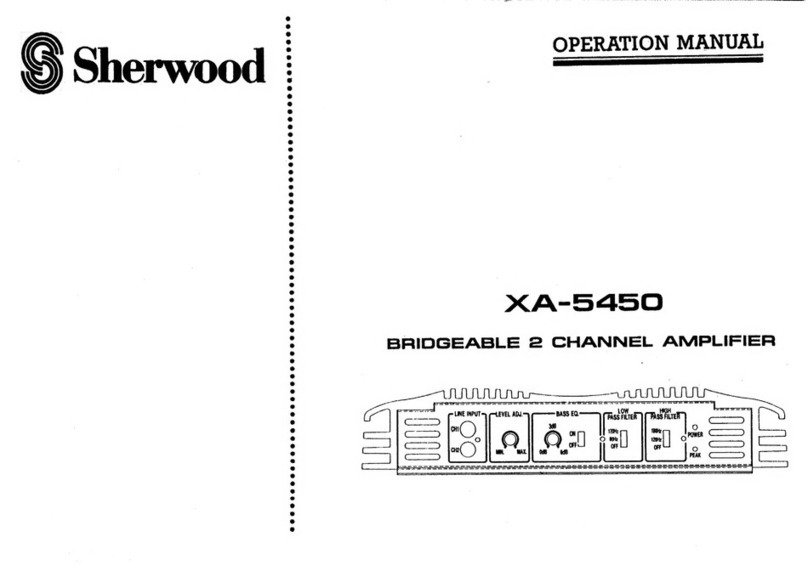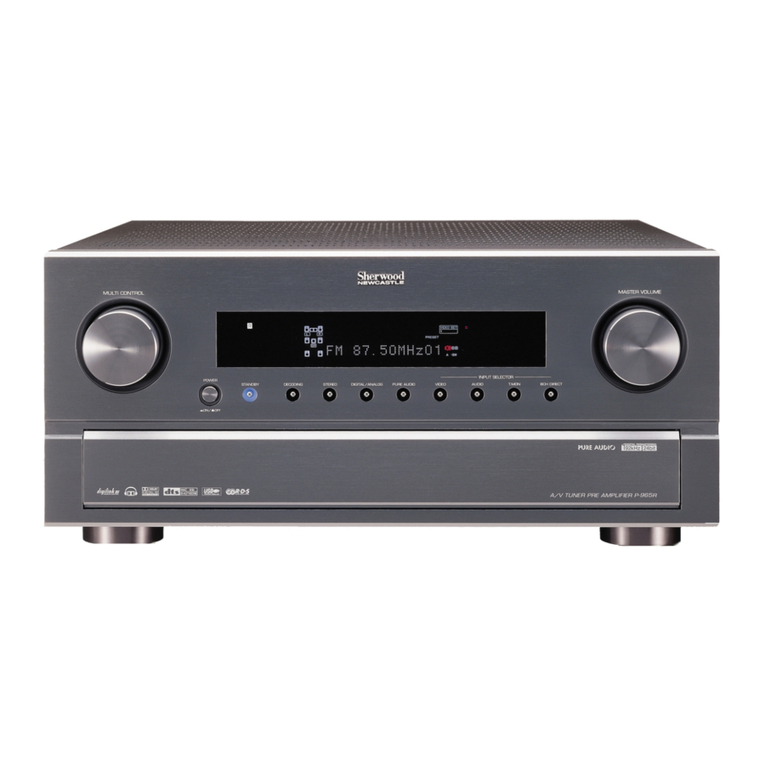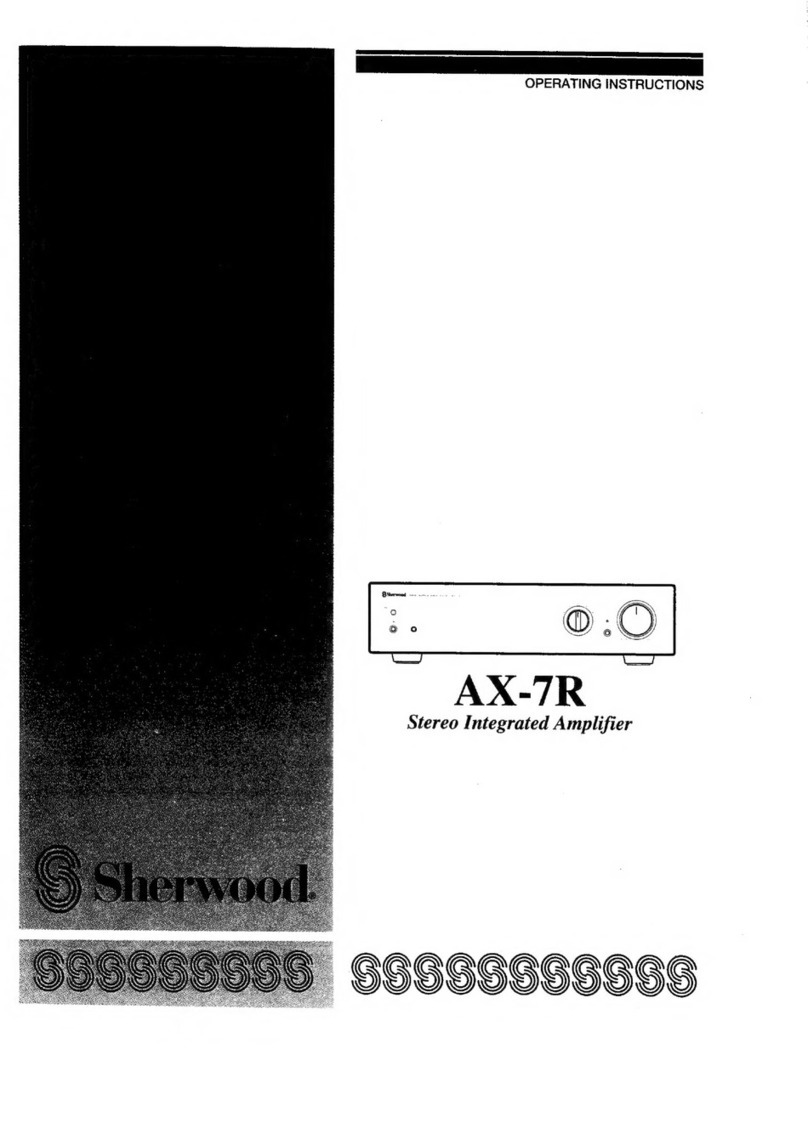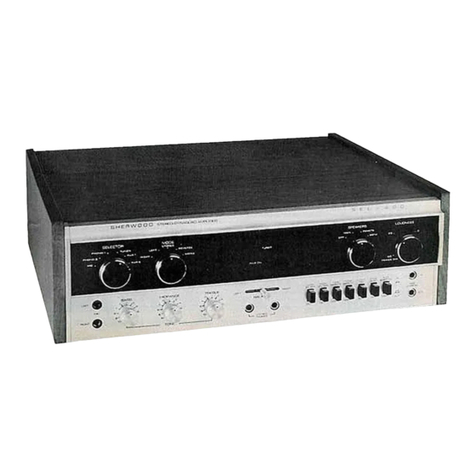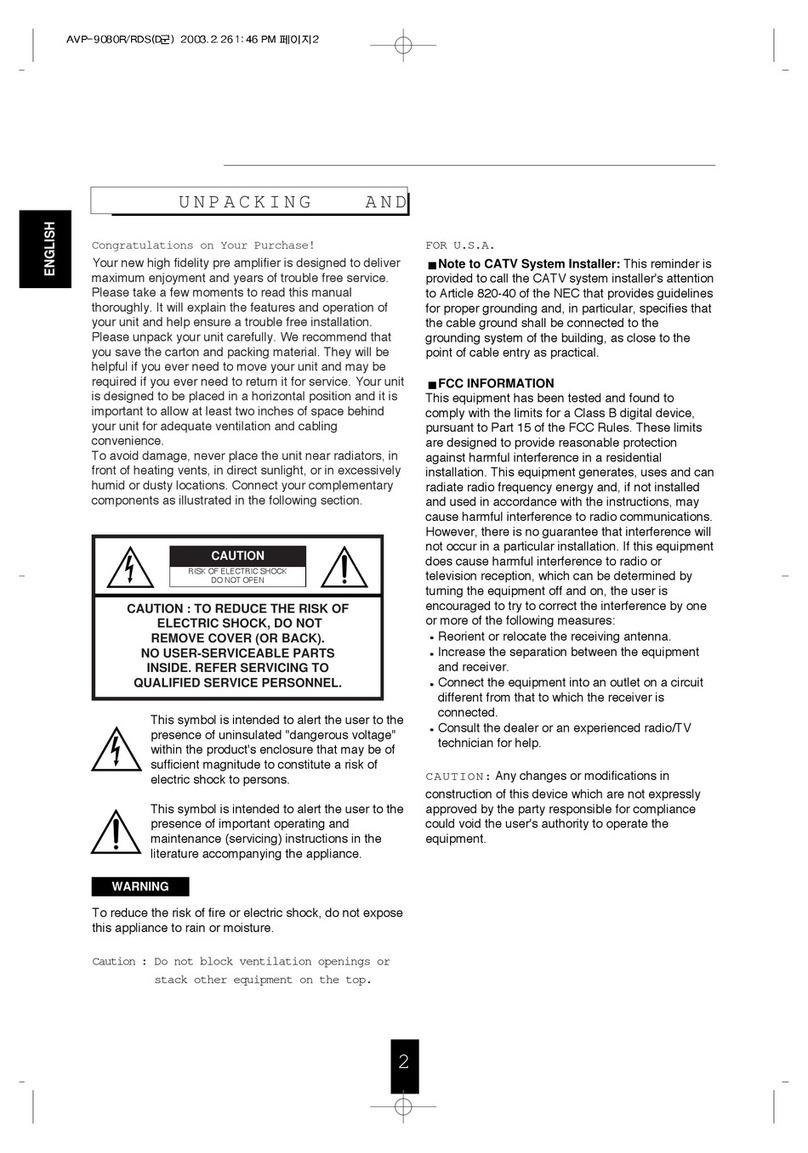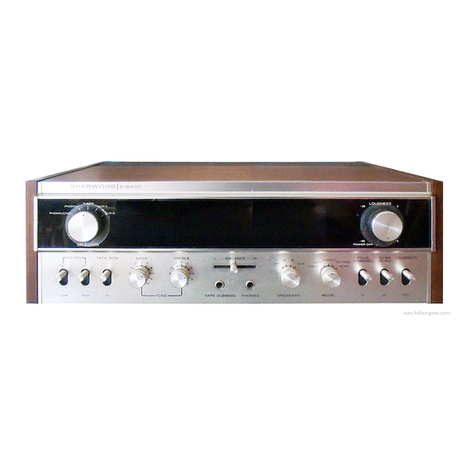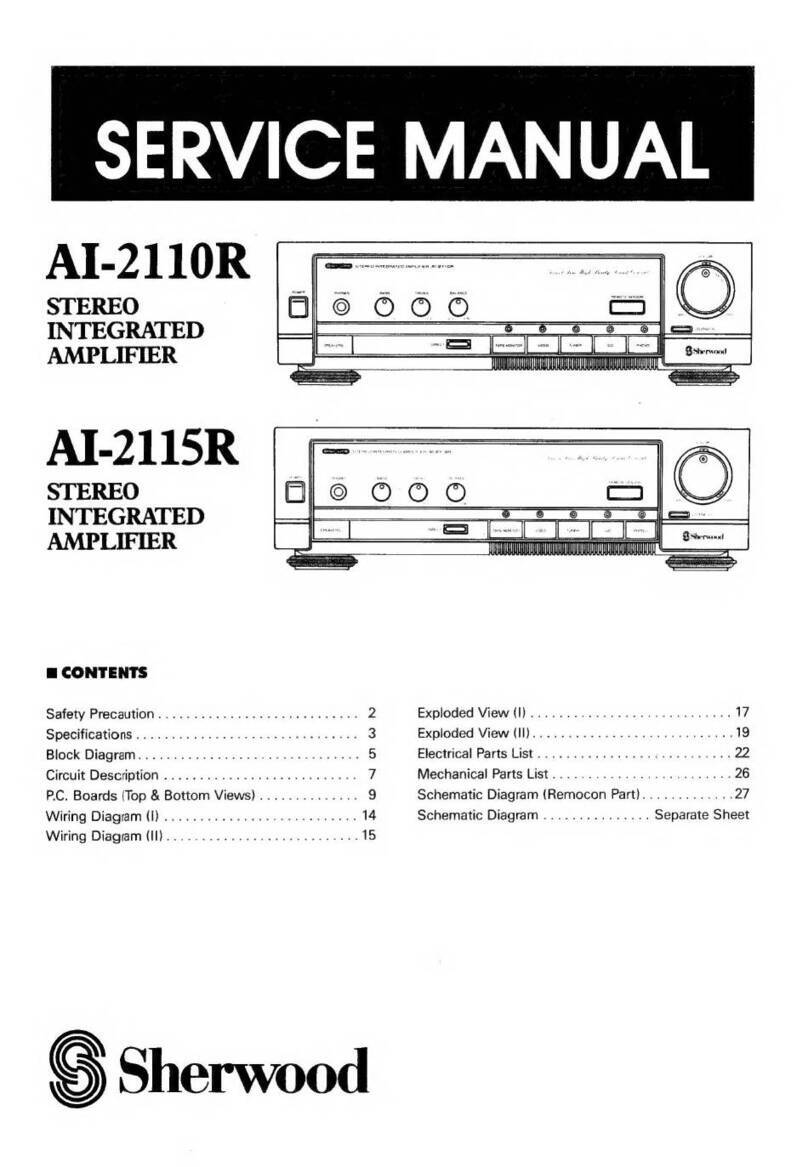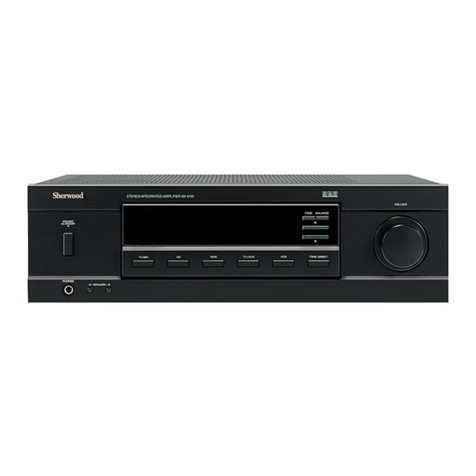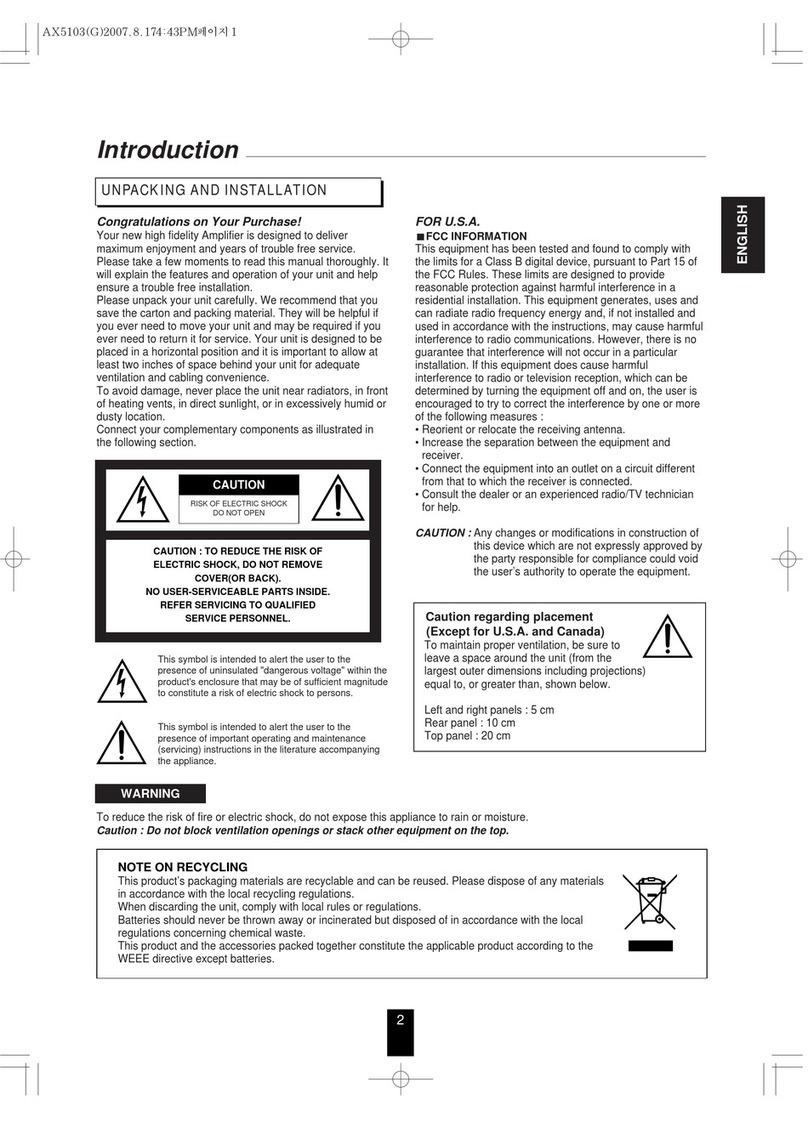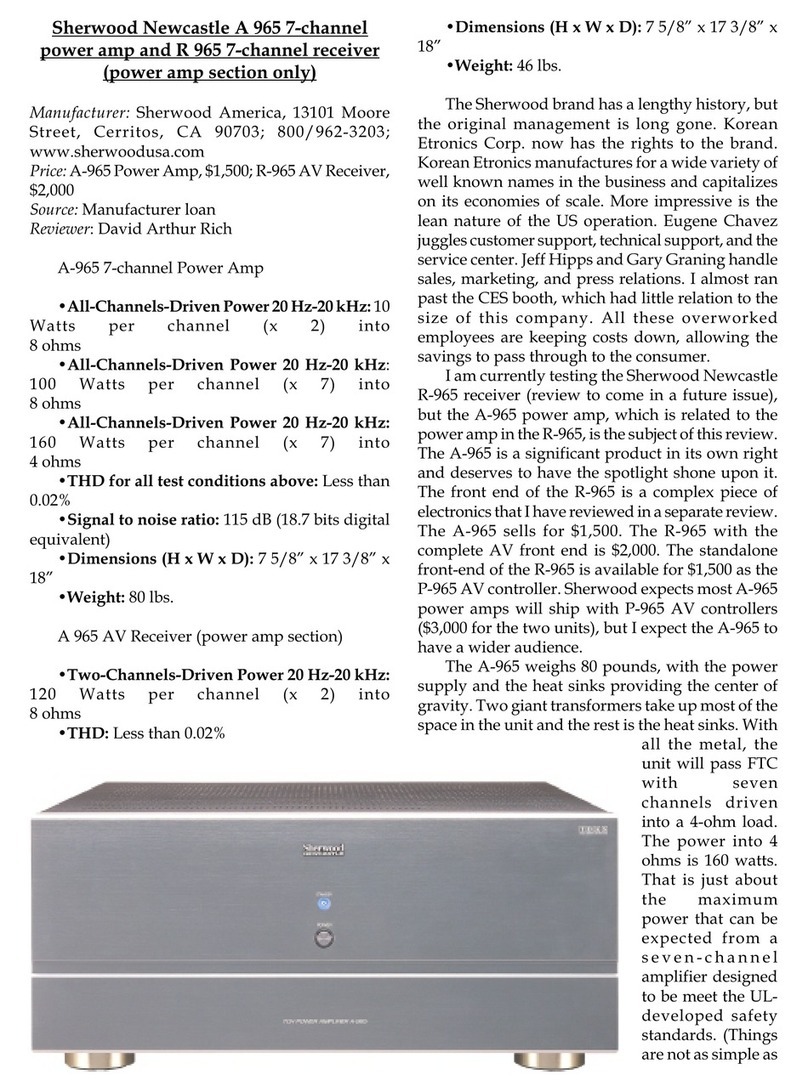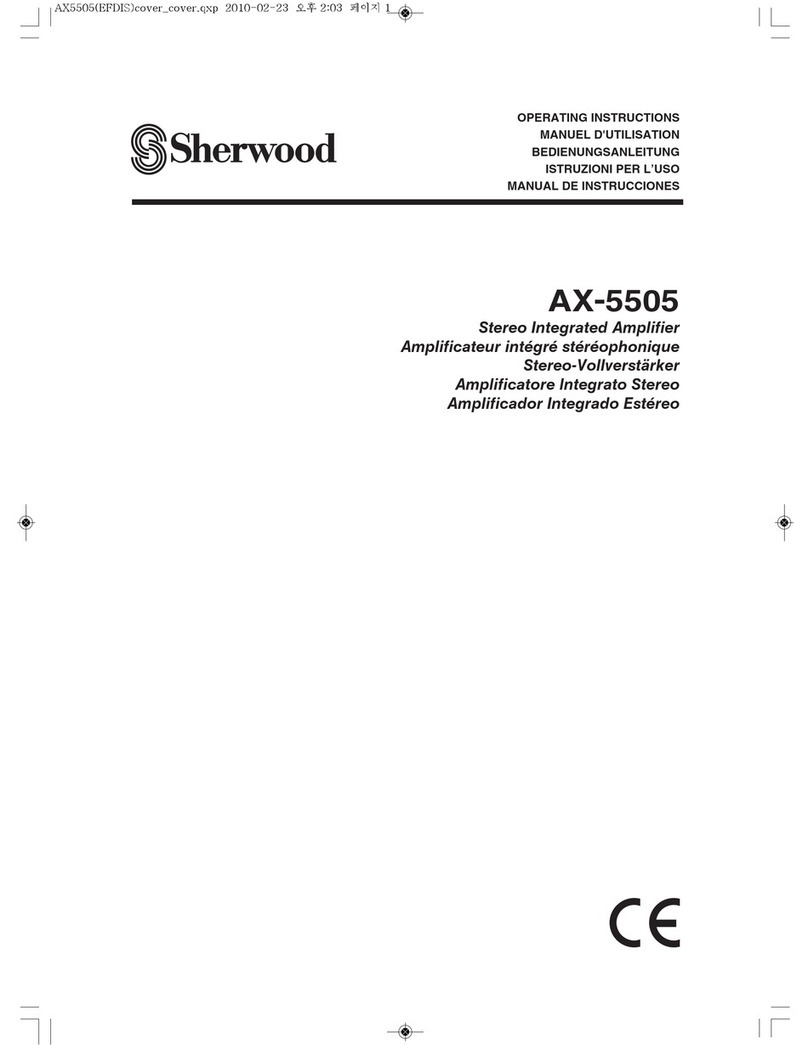SERVICING
1. AMPLIFIER/PREAMP STAGEISOLATION: Eval-
uat thus,
B+ supply shouldbe suspectedfor malfunction. If one
channel
only, evaluatewith test signal whether signal
feedsproperly through phonopreamp, auxiliary high-
level input, or into volume control at high side (this
isolates power amplifier section from tone amplifier
section).
2. FAULT ISOLATED TO POWERAMPLIFIER: With
DC upply
voltages, colleetor, emitter, ild base voltages of
transistors on the driver-circuit boards andof output
transistors in the faulty power amplifier channel. The
voltages shouldbe verified against those
shown
on the
schematicfor 120V
power line andalso against those
in the 2nd
channel
(assumedto beoperating
comectly).
Note that output electrolytic coupling capacitor DC
voltage (on transistor feed side) shouldread approx.
L/2 of.
g+ supply voltage. Note in most cases of a
defective driver or output transistor, the fuse will
open and prevent the taking of a usable center-point
voltagereading. Therefore, it is valuable to operate
the amplifier with a variable voltage power line
(Variac) equipped
with a line wattmeter (or ammeter)
to identify abnormal power consumption.
With the Variac, reduce thepowerlinevoltage tozero,
replace fuse, and slowly increase power line voltage
upwardwhile observing wattmeter. (The power con-
sumption should
not exceed10-15 watts as the
voltage
is increasedup to rated 120volts. If powerconsump-
tion reading beginsto exceed
15watts, starting from
zero voltage, do not increase power line voltage fur-
ther. ) Nowverify center-point voltagefor half-voltage
reading.
If center-point voltage reads extremely low, suspect
defective output or driver transistors on low side
(schematic shows these as bottom devices in each
channel). lf center-point voltage reads extremely
hrgh, suspect defective high-side output or driver
transistors.
Remove both driver transistors from their sockets.
If power consumption
drops considerabll', thenfaulty
driver transistors shouldbe suspected. If powercon-
sumption remains unusually high, then faulty output
transistors should
be suspected. If not, suspect
pre-
driver or bias-regulator transistor or assoeiated
components.
H afl above
seemsnot to be at fault, then verify that
output couplingelectrolytic capacitor is not shorted,
other
capacitors
arenot
shorted,circuit board
contains
no solder or etchingshorts, openresistors, or poor
solder connections. (Note: a small error voltage
at pre-driver base and/or emitter will disruptgrossly
the operation of the driver andoutput transistors. )
If center-point voltagereads approximately l/2 voltage
in accordancewith above
check, apply audio signal to
channel being investigated and measure distortion as
per service instruction manual. Distortion which
exceeds
amplifier ratings might be due to oneof the
following:
1. Outputtransistors do not havematchedbeta"
2. Outputbias requires readjustment.
3. Driver transistor has low beta.
3. FAULT ISOLATED TO TONE CONTROL
A collec-
6r, ernlii6, ild base on tone circuit board and
compare with schematic andwith good channel. Feed
1KC audio signal to input connection to tone circuit
board. Compare outpuf voltage to input voltage which
should have a gain ratio of about 6db (2X).
Isolate inoperate stage by checking signal at input of
treble control. Compare this voltage to input voltage
which should rezult in lst stage gain - approximately
6db(2x)"
Evaluatedistortion in conjunctionwith power amplifier.
Verify bass and treble frequency responsewith bass
and treble boost andcut characteristic curves shown
in service manual.on
Page
8.
4. FAULT ISOLATED
TOPREAMP: Check
DC
voltages
at t d base
onpreamp.
circuit board and compaJ'e
with schematic and with
good channel. Feed 1KC audib signal to phono input
jack. Compare outputvoltage at input of tone circuit
board to input voltage. The resulting calculated gain
ratio should
beapproximately40db
(100X)
withpreamp.
gain (phono
level) control at maximum gain. Isolate
the inoperative stage by checking signal voltage at
collectorof 1st stage. Verify frequency
responsewith
phonoand tape equalization curves shown in service
manual on PageB.
5. FAULT ISOLATED
TOPOWERSUPPLY:
CheckDC
vol er capaci-
tor sections
andcompare
with thoseshown
oh schema-
tic. If a voltage measures low, remove leads to
amplifier or receiver loads to isolate possibility of
Ieakyor shortedelectrolyticcapacitor
section. Page
5
